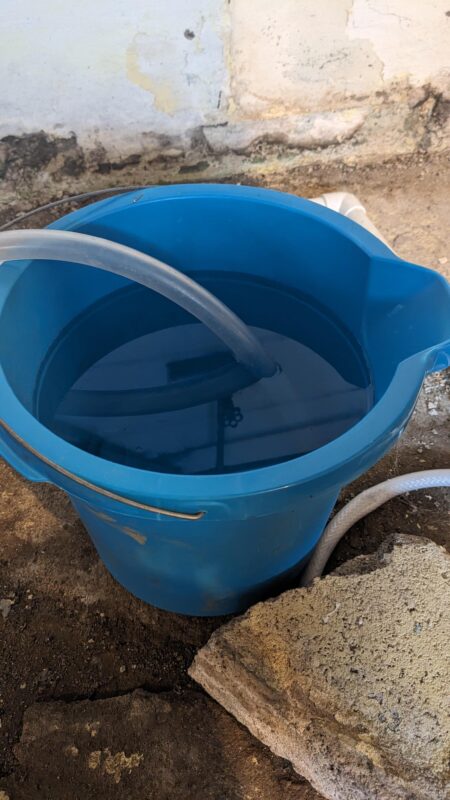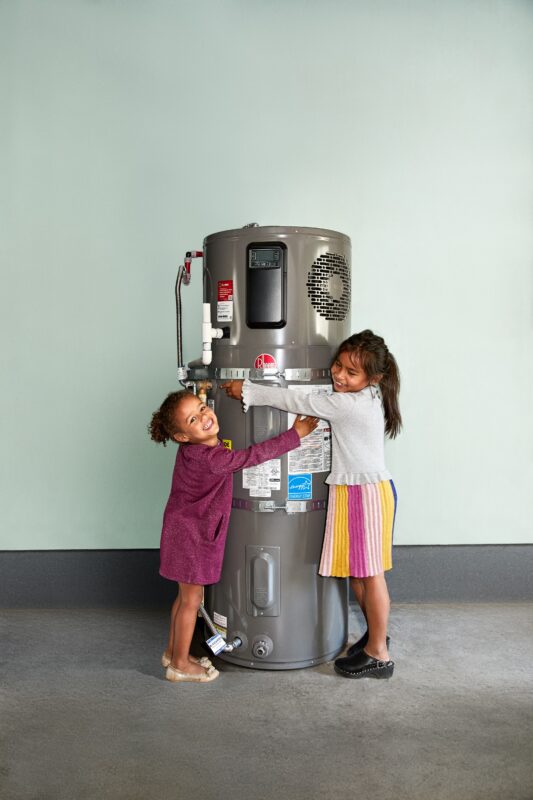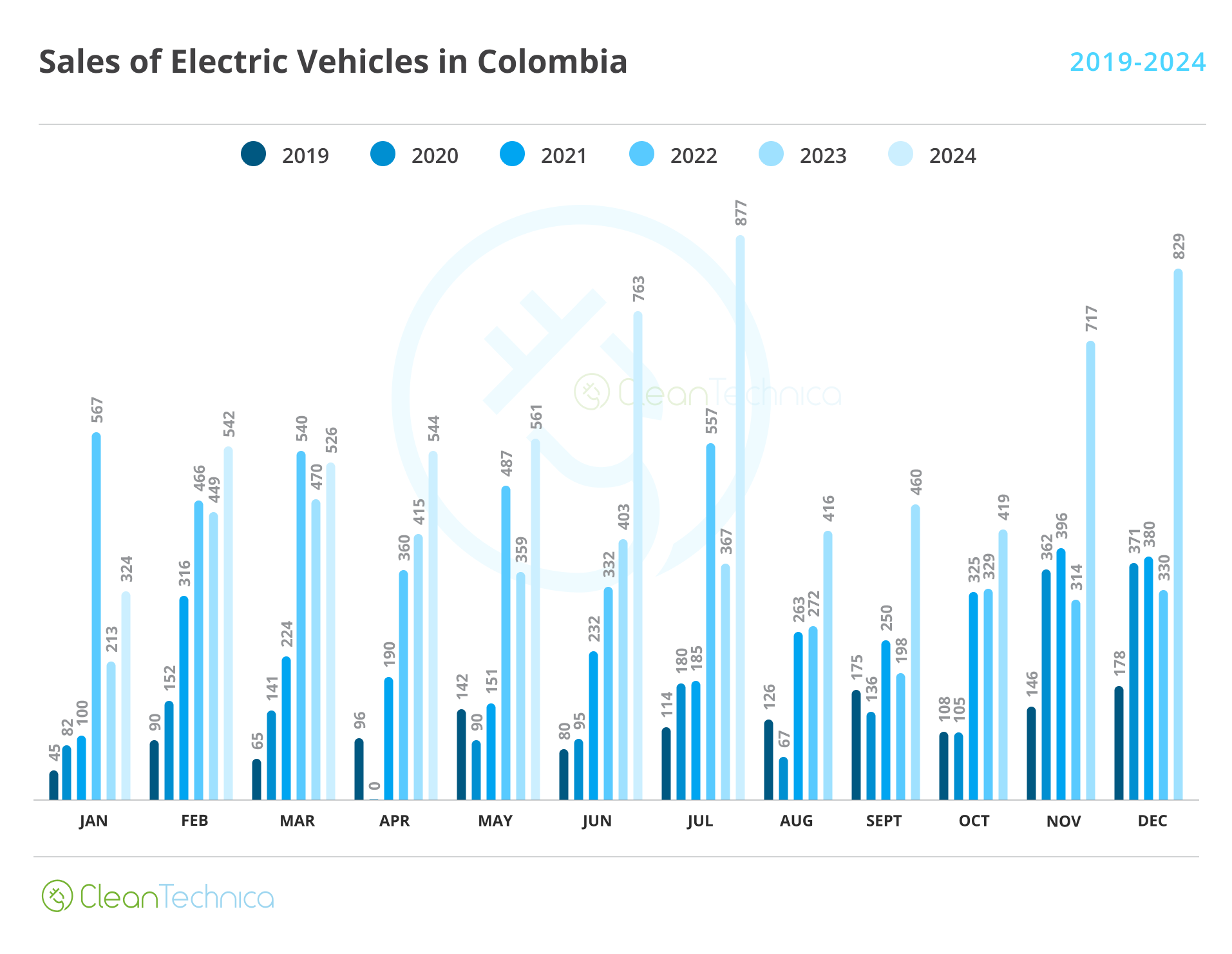Sign up for daily news updates from CleanTechnica on email. Or follow us on Google News!
Heat pump water heaters are efficient, money-saving, decarbonizing machines. They use a fraction of the energy of the old-school technologies they replace without any compromise in performance. They offer lower utility bills, reduced carbon emissions, and dehumidification! The word is now out, and sales are taking off with new rebates, mandates, and tax credits expected to drive sales through the roof by the end of the decade. We figured it was a good time to share our experience installing four of them in four different spaces.
What is a Heat Pump Water Heater?
Heat pumps move heat rather than create it. They pull heat out of the nearby air and use it to warm water. This makes them super efficient — up to three to five times more so — than gas or electric resistant water heaters. They look like a typical water heater, with a bit more height because the heat pump sits on top of the water tank.
Most heat pump water heaters run on 240 volts, which is the same power that goes to the larger outlet for most dryers. If your current water heater is gas, you may not have electricity running to it. So when you’re ready to make the transition, you’ll need to run a 240-volt electrical line, unless you get a new 120-volt plug-in model (read about our fourth install below for more on this option). If your current water heater is electric, it will have 240-volts of electricity, likely making for an easy swap out.
Why We Love Them
Cost. While solar panels and electric vehicles get a lot of love, the heat pump water heater is perhaps the most affordable climate-saving technology of the decade. While we are also super users of solar panels and electric cars, installing solar costs an average of $20,000 and the average new electric vehicle costs $53,469. Heat pump water heaters cost around $1600 for the appliance plus $1000-$3000 for the install, depending on the fuel type of your current water heater. This is a little more than gas or electric water heaters, but many utilities offer rebates that bring them to price parity, and there is now a 30% tax credit from the Inflation Reduction Act. If you’re debating about how to prioritize your decarbonization investments, consider that a heat pump water heater is the energy saving equivalent of 7 solar panels & costs ⅙ the price. Because they use electricity so efficiently, they cost very little to operate. We’re talking between $100-$150 per year for an average family of four, which saves $550 over an electric resistance water heater and $200 over a gas water heater. That means your new heat pump water heater will pay for its higher upfront cost in just a couple of years, and then save money each year.
Efficiency. Water heating accounts for a large share of energy use in buildings — 17% in single family and up to 32% in multi-family homes. Heat pump water heaters are three to five times more efficient than standard water heaters.
Carbon. Not only are heat pump water heaters super energy efficient, but they run on electricity, which means we can power them with renewable sources, which are growing steadily and have surpassed coal in the US. Each heat pump water heater that replaces a gas water heater will save around 1 ton of CO2 annually.

Carbon savings of a heat pump water heater. Source: Advanced Water Heating Initiative.
Word about all these benefits is out. According to New Buildings Institute, while heat pump water heaters currently account for only 1.6% of new water heater sales, they grew 26% in 2022 and are expected to increase to half of all water heater sales by 2030.
Our Experience Installing Four Heat Pump Water Heaters
Not only are we repeat solar customers, but we’re the proud owners of FOUR heat pump water heaters. If any individuals reading this have beat our record, we’d love to know and include you in a future post! Since 2017 we’ve installed heat pump water heaters in our main house, accessory dwelling unit, and both sides of a family-owned duplex in Cleveland. Two of the water heaters are in interior closets and two are in basements. We mostly only replaced water heaters that were at the end of their useful life, and all of our installs replaced gas water heaters, which is the more challenging replacement scenario.
We’re big fans of making a decarbonization plan and executing it over time. For water heaters, this means you don’t have to change out your water heater next week, but make a plan to understand your home’s installation requirements and identify a preferred contractor so you’re ready to switch when the time is right. Heat pump water heaters save so much on utility bills that proactively replacing an inefficient, but still functional, water heater is worthwhile.
First Install
Our love affair with heat pump water heaters began in late 2017. Our home’s 20-year old gas water heater was nearing its end, and Joe had read about the technological advance of heat pumps for water heating. At that time, they were still relatively new and research left us with a lot of questions. We don’t have a basement or garage, which are the easiest places to install them because they make some noise and exhaust cool air, so we had to get creative. Our heat pump water heater is located in a coat closet in the middle of our living space, and in order to reduce its potential space cooling impact, we opted to duct it to the attic, where it could exhaust to a non-livable space and also draw from the hottest air in our house. You don’t have to follow our lead here, as there are plenty of options for locating a heat pump water heater in a conditioned space without having to duct it. We couldn’t find any local installers at the time, but Joe watched enough YouTube videos to feel comfortable providing instructions to a trusted handyman. Even though it was a gas conversion, there was an existing 240 volt electrical line, which made things easier. For the last six years, this 50 gallon unit has consistently provided plenty of hot water for three showers and six people (our family of four plus an addition on Airbnb).

Our original heat pump water heater packed into the coat closet of our house. Ducting is an option for interior closet installs, but often not necessary.
Second Install
The gas water heater in our Accessory Dwelling Unit was a lesson in stranded assets — something we invested in, but did not get the full life out of because we opted to replace a still functional appliance with a clean energy alternative. We bought an efficient gas water heater in 2012, when we converted our garage to a living space, and opted to replace it with heat pump technology just seven years later so we could remove all fossil fuels from our property! This 50 gallon water heater is also located in a closet, and we used the same attic ducting technique. This mighty water heater not only provides all the hot showers our tenant could ever want, but also runs the radiant floor heating system which heats the unit. (We understand that heat pump water heaters don’t yet consistently work great with hydronic heating systems, so not sure we’d recommend it.)
Third Install
A few years ago we decided to fix up a duplex in Cleveland, Ohio, that has been in our family for 75 years. In addition to some serious aesthetic and sustainability improvements, we are in the process of decarbonizing the house by transitioning all systems to electric. This included replacing an almost 30-year old basement water heater with our favorite heat pump variety. In addition to costing us only $100 per year in energy bills (compared to about $300 for the previous gas water heater), it provides us with free dehumidification (about 2-4 quarts of water per day), which is a major plus in this damp, Midwestern basement. We’re not the only ones who loves this. Another article mentions an Ohio homeowner who was able to turn off two dehumidifiers and save hundreds of dollars a year with a heat pump water heater.

We get 4 quarts a day of dehumidification from our heat pump water heater.
This install was relatively easy with a plumber who removed the old gas water heater, added a new 240-volt electrical line for power, and ran a condensate tube to the basement floor drain. The water heater is located in a basement that maintains about 60 degrees all winter, and we’ve consistently operated it in heat pump only mode, which avoids the less-efficient electric resistance backups. We’ve never received a complaint from our family or Airbnb guests who stay in the property.

240 volt heat pump water heater on the south side of our Cleveland duplex.
Fourth Install
This past summer, we added a fourth heat pump water heater to our collection and became one of the first homes in the country to install a 120-volt plug-in model. We replaced another 30-year-old gas water heater, in the basement, with a just-barely-on-the-market option that allowed us to avoid running a new 240-volt line from our small circuit breaker. The technology is so new that we had to place a custom order with Home Depot and convince a local plumber to do the install. Because of the simplicity of the 120 volt option, it took just 2.5 hours for the plumber, who had not previously heard of a heat pump water heater, to complete the work. We know from monitoring the Rheem app that it’s performing great. Our next post will be a deep dive on our experience with this exciting new model.

120 volt heat pump water heater in the north side of Cleveland duplex.
Hug Your Water Heater, it’s Helping to Save the Planet

Exploiting our kids’ cuteness in the name of decarbonization. This photo may have been featured on our 2022 holiday card.
Apparently we’re not the only ones who love heat pump water heaters. Joe’s first article on the topic was the most read CleanTechnica article for a week in 2020. In 2022, two of our water heater articles were in the top 20 most read articles of the year. The success we’ve found installing these water heaters has followed a predictable and rewarding pattern: when we’ve gone out on a limb and experimented with a new technology (which these were back in 2017) or lifestyle choice, for the sake of our changing climate, it has always paid off in spades. And when the sun is shining, and our solar panels are collecting photons to make electricity, it’s particularly satisfying to take a shower or run the dishwasher, knowing that all the energy to heat the water comes from the sun.
And there’s one more thing. You’ve probably heard of tree-huggers, but what about water heater huggers? On 25th, Joe is helping to organize the now second annual Heat Pump Water Heater Day. Along with hundreds of organizations, join us to celebrate (and hug) the cylindrical climate saving appliance that’s helping ensure a livable future.
 This article is part of a series called Decarbonize Your Life. With modest steps and a middle-class income, our family has dramatically reduced emissions and is sequestering what remains through a small reforestation project. Our life is better for it. If we can do it, you can too.
This article is part of a series called Decarbonize Your Life. With modest steps and a middle-class income, our family has dramatically reduced emissions and is sequestering what remains through a small reforestation project. Our life is better for it. If we can do it, you can too.
Have a tip for CleanTechnica? Want to advertise? Want to suggest a guest for our CleanTech Talk podcast? Contact us here.
EV Obsession Daily!
I don’t like paywalls. You don’t like paywalls. Who likes paywalls? Here at CleanTechnica, we implemented a limited paywall for a while, but it always felt wrong — and it was always tough to decide what we should put behind there. In theory, your most exclusive and best content goes behind a paywall. But then fewer people read it!! So, we’ve decided to completely nix paywalls here at CleanTechnica. But…
Thank you!
Tesla Sales in 2023, 2024, and 2030
CleanTechnica uses affiliate links. See our policy here.






